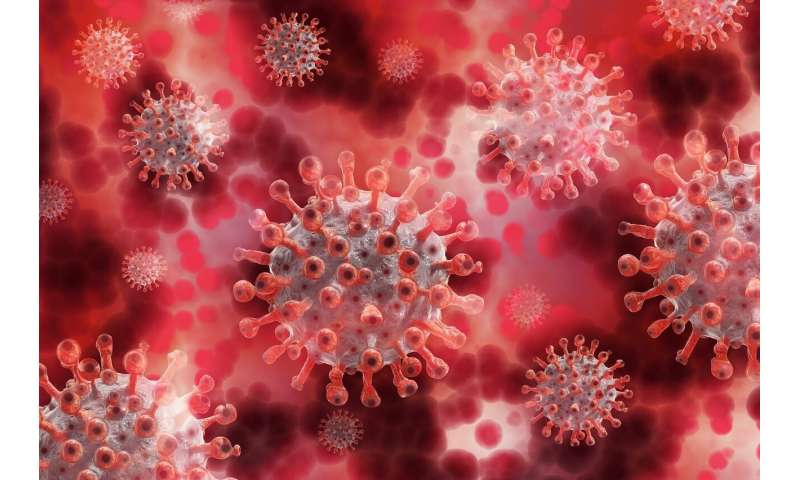
A new pilot study from the Icahn School of Medicine at Mount Sinai suggests that COVID-19 is causing significant dilation of the blood vessels of the lung, specifically the capillaries. This vasodilation is contributing to the very low oxygen levels seen in COVID-19 respiratory failure and also helps explain why the disease behaves differently than classic acute respiratory distress syndrome (ARDS). The study was published in the American Journal of Respiratory and Critical Care Medicine.
In classical ARDS, pulmonary inflammation leads to leaky pulmonary blood vessels that flood the lungs with fluid, making the lungs stiff and impairing oxygenation. Many patients with COVID-19 pneumonia demonstrate severe hypoxemia that is markedly out of proportion to the degree of lung stiffness. This disconnect between gas exchange and lung mechanics in COVID-19 pneumonia has raised the question of whether the mechanisms of hypoxemia in COVID-19 differ from those in classical ARDS.
The discovery was serendipitous. Researchers were initially assessing cerebral blood flow in mechanically ventilated COVID-19 patients with altered mental status to look for, among other things, abnormalities consistent with stroke. They used a robotic transcranial Doppler (TCD), the Lucid Robotic System by NovaSignal, to perform a “bubble study,” which is a non-invasive and painless ultrasound technique.
“It is remarkable that a diagnostic machine used to study the brain could give us insight into the pathophysiology of a pulmonary disease. The benefit of using this particular system was that automated monitoring allowed providers to assess cerebral blood flow while minimizing the potential for exposure to COVID-19,” said Alexandra Reynolds, MD, Assistant Professor of Neurosurgery, and Neurology, at the Icahn School of Medicine at Mount Sinai and Director of TeleNeurocritical Care for the Mount Sinai Health System.
During this study, agitated saline—saline with tiny microbubbles—is injected into the patient’s vein and TCD is used to determine if those microbubbles appear in the blood vessels of the brain. Under normal circumstances, these microbubbles would travel to the right side of the heart, enter the blood vessels of the lungs, and ultimately get filtered by the pulmonary capillaries, because the diameter of the microbubbles is bigger than the diameter of the pulmonary capillaries. If the microbubbles are detected in the blood vessels of the brain, it implies that either there is a hole in the heart, so that blood can travel from the right to the left side of the heart without going through the lungs, or that the capillaries in the lungs are abnormally dilated, allowing the microbubbles to pass through.
In the pilot study, 18 mechanically ventilated patients with severe COVID-19 pneumonia underwent TCD with bubble study. Fifteen out of the 18 (83 percent) patients had detectable microbubbles, indicating the presence of abnormally dilated pulmonary blood vessels. The number of microbubbles detected by the TCD correlated with the severity of hypoxemia, indicating that the pulmonary vasodilations may explain the disproportionate hypoxemia seen in many patients with COVID-19 pneumonia. Previous studies have demonstrated that only 26 percent of patients with classical ARDS have microbubbles during a bubble study; furthermore, the number of these microbubbles does not correlate with the severity of hypoxemia, implying that pulmonary vascular dilations are not a major mechanism of hypoxemia in classical ARDS.
“It is becoming more evident that the virus wreaks havoc on the pulmonary vasculature in a variety of ways. This study helps explain the strange phenomenon seen in some COVID-19 patients known as ‘happy hypoxia,” where oxygen levels are very low, but the patients do not appear to be in respiratory distress. If these findings are confirmed in larger studies, pulmonary microbubble transit may potentially serve as a marker of disease severity or even a surrogate endpoint in therapeutic trials for COVID-19 pneumonia. Future studies that investigate the use of pulmonary vascular constrictors in this patient population may be warranted,” says senior author Hooman Poor, MD, Assistant Professor of Medicine (Pulmonary, Critical Care and Sleep Medicine) at the Icahn School of Medicine at Mount Sinai and Director of Pulmonary Vascular Disease at the Mount Sinai—National Jewish Health Respiratory Institute.
Source: Read Full Article
